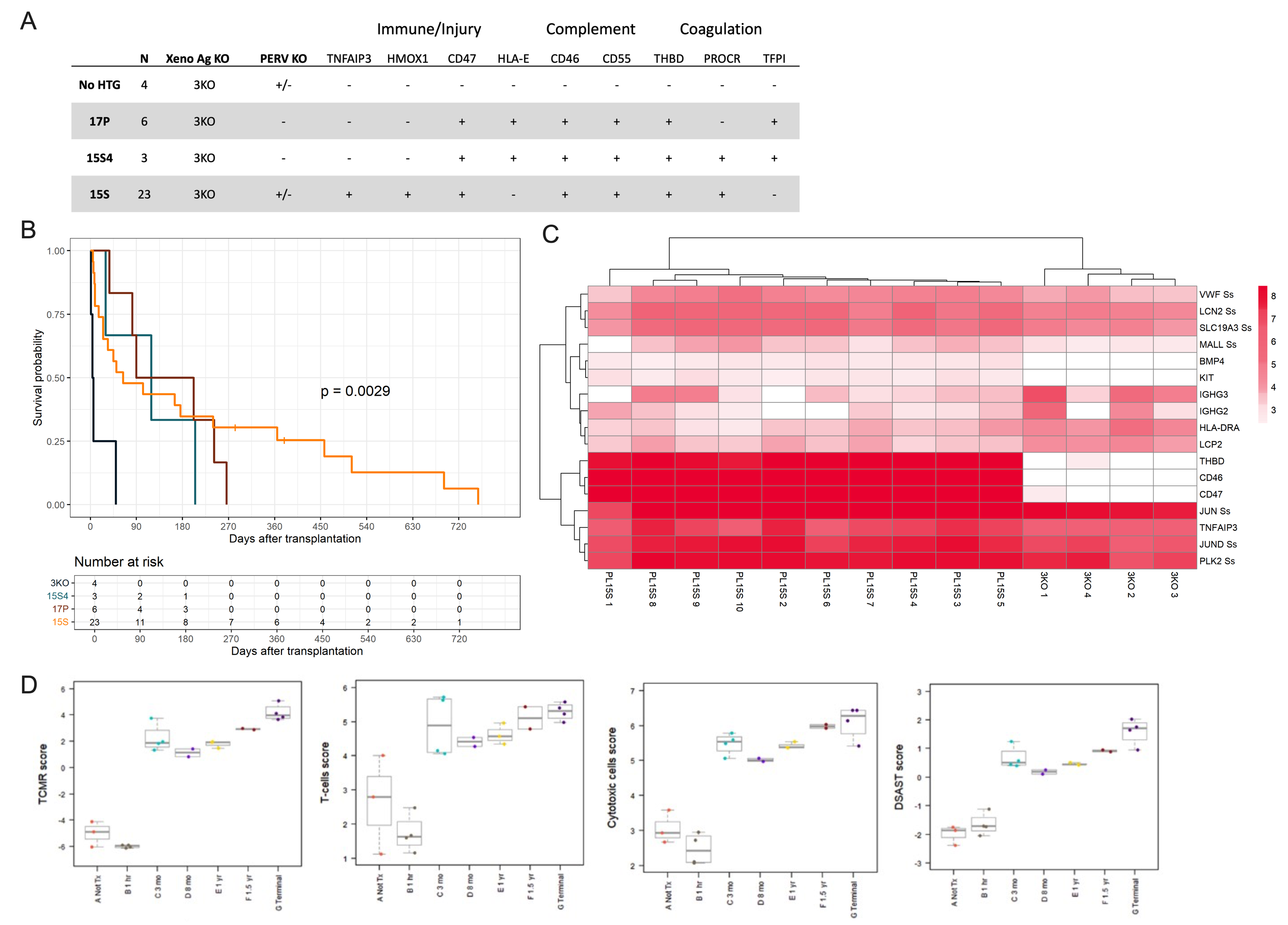Reduced inflammation and lymphocyte infiltration after reperfusion in triple knock-out porcine kidney xenografts expressing human transgenes transplanted to nonhuman primates
Ahmad Karadagi1, Ivy Rosales1, Takayuki Hirose1, Grace Lassiter1, Toshihide Tomosugi1, Ryo Otsuka1, Michael Curtis2, Sagar Chhangawala2, Susan Low2, Wenning Qin2, Robert Colvin1, Tatsuo Kawai1.
1Center for Transplantation Sciences, Massachusetts General hospital and Harvard Medical School, Boston, MA, United States; 2eGenesis, Cambridge, MA, United States
Introduction: We have recently reported kidney xenograft survival exceeding 2 years in nonhuman primates (NHPs) that received porcine xenografts with triple xenoantigen knockouts (3KO) and seven human transgenes. In the current study, we evaluated mRNA expression in immediate post-reperfusion and serial biopsies to elucidate the importance of transgenes and gauge the effectiveness of the immunosuppressive regimen.
Methods: Donors with 3KO alone, and donors with 3KO and human transgenes (TNFAIP3, HMOX1, CD47, HLA-E, CD46, CD55, THBD, PROCR, TFPI) in different payloads (Fig. 1A) were generated by eGenesis on a Yucatan miniature swine background. Life-sustaining kidney transplantation was conducted in cynomolgus macaques. Immunosuppression included ATG and Rituximab induction, followed by a two-month course of corticosteroid and tacrolimus, and maintenance immunosuppression with anti-CD154 mAb and mycophenolate mofetil. mRNA expression in serial post-transplant biopsies was retrospectively analyzed using the NanoString nCounter platform with a modified Banff Human Organ Transplant (B-HOT) panel, omitting probes with <80% homology with pig kidney or NHP leukocytes and added 35 swine specific probes.
Results: Xenograft survival was significantly superior with 3KO plus added human transgenes (15S, 17P and 15S4) compared to 3KO alone (p=0.0029, Fig. 1B). Payload 15S showed best reduction of hazard ratio (HR 0.14 (0.042 – 0.046), p=0.001), followed by Payloads 17P and 15S4. Out of five transgene targeting probes included in the B-HOT panel, three revealed markedly overexpressed human transgenes (CD46, CD47 and THBD) (Fig.1C). However, CD55 was not detected and TNFAIP3 was erroneously detected in 3KO alone kidneys due to cross reactivity with the background swine gene. As early as 1-hour post-reperfusion, differentially expressed genes were observed highlighting increased NHP lymphocyte infiltration and reduced pig parenchymal cells (Fig. 1C). Significantly higher gene sets of KT2 (kidney tubules), eGFR later while lower cytokine signaling scores were observed at 1 hour in 15S compared to 3KO alone. Longitudinal analyses of serial biopsies in the 15S long-term survivors exhibited a progressive increase in T cell, cytotoxic, and TCMR scores along with DSAST scores (Fig. 1D).

Conclusions: The survival of renal xenografts exceeding 2 years in the 3KO.7TG group is likely associated with reduced inflammatory profiles in the kidney graft, facilitated by the presence of human transgenes. While TCMR was not the predominant feature in the pathology of long-term survivors, the progressive increase in gene sets related to T cell activation suggests modification of the anti-CD154/MMF only maintenance immunosuppressive regimen may further improve xenograft survival.
